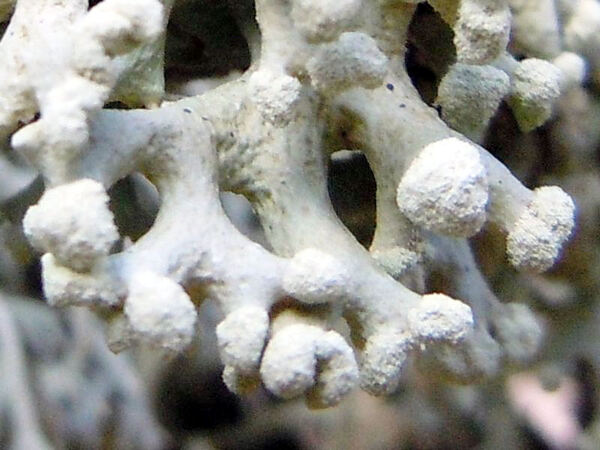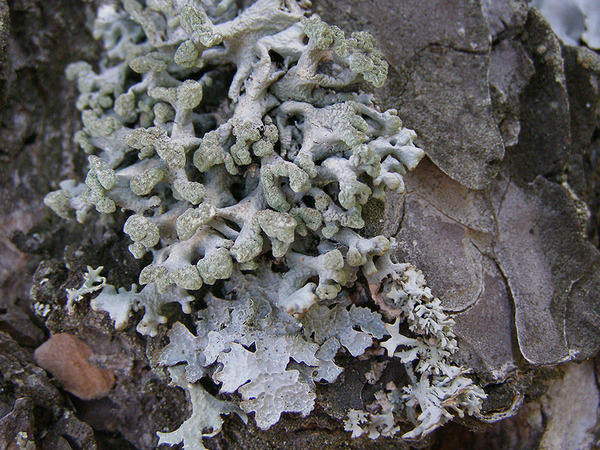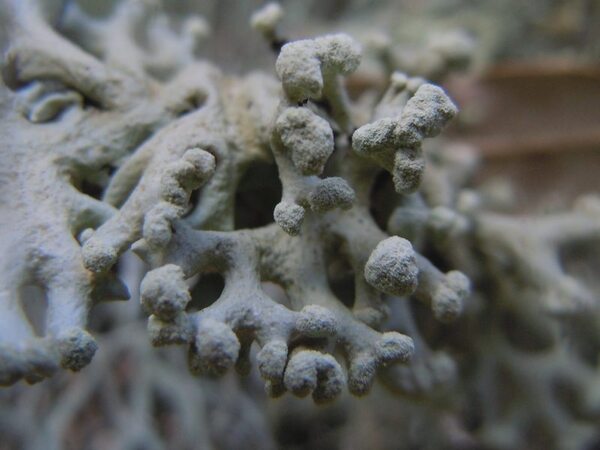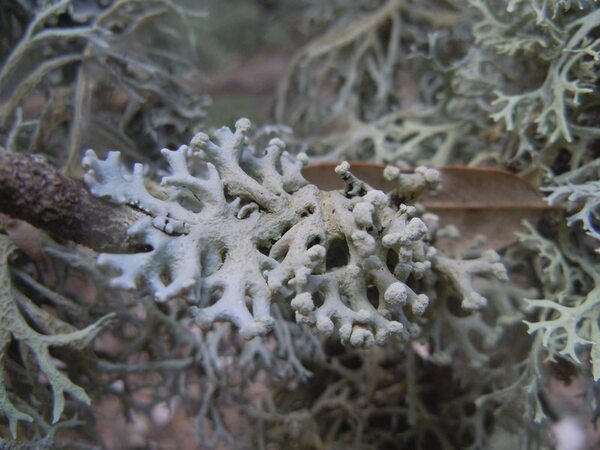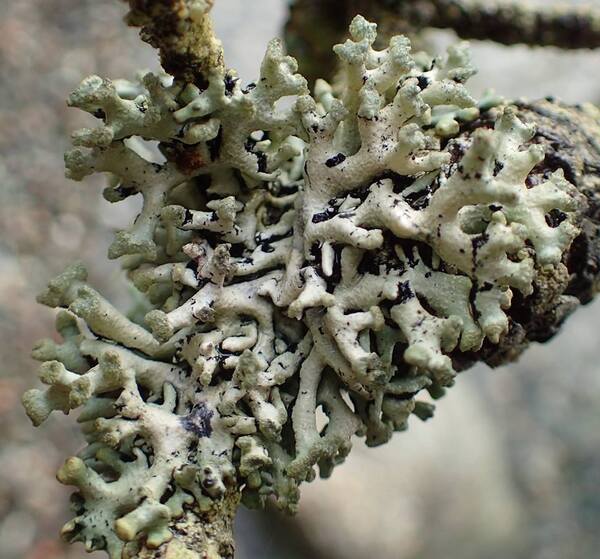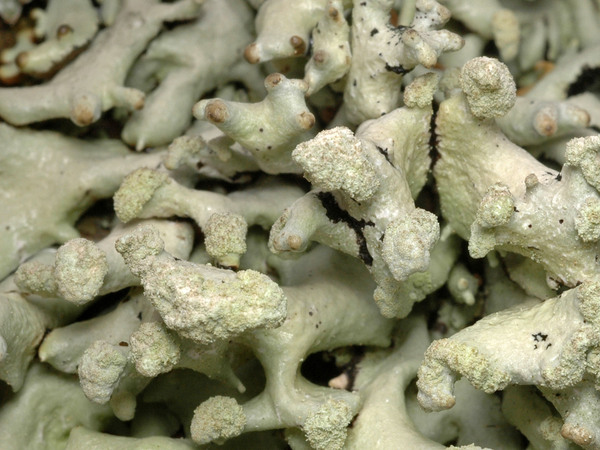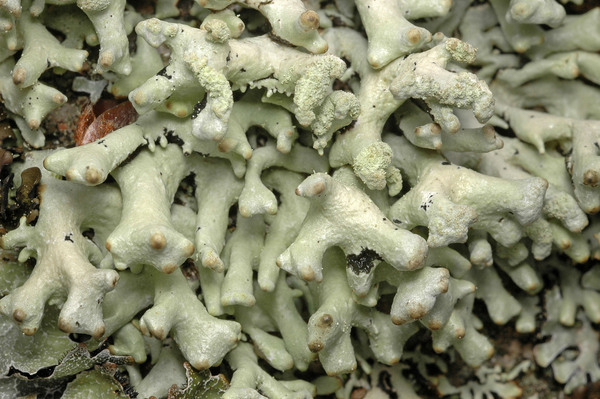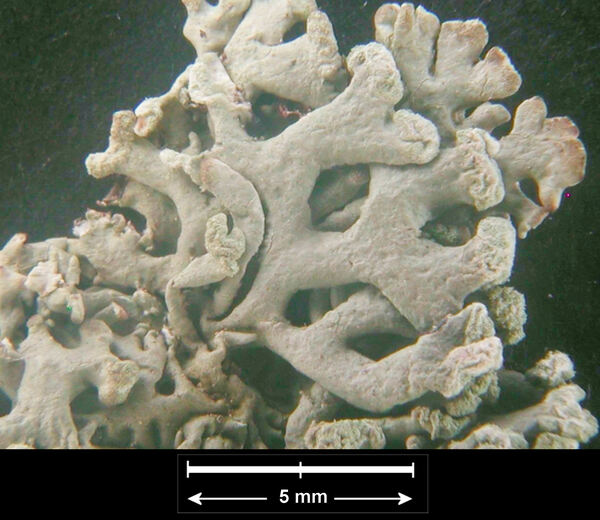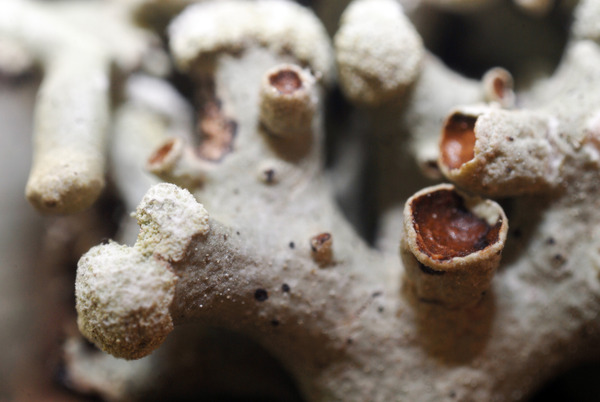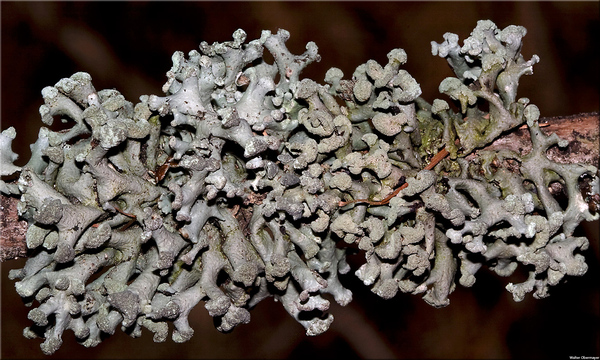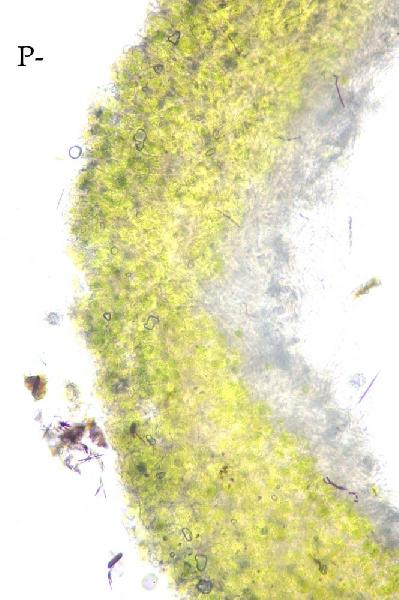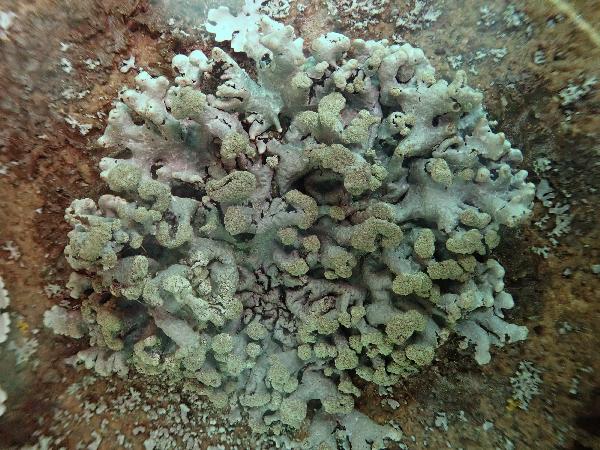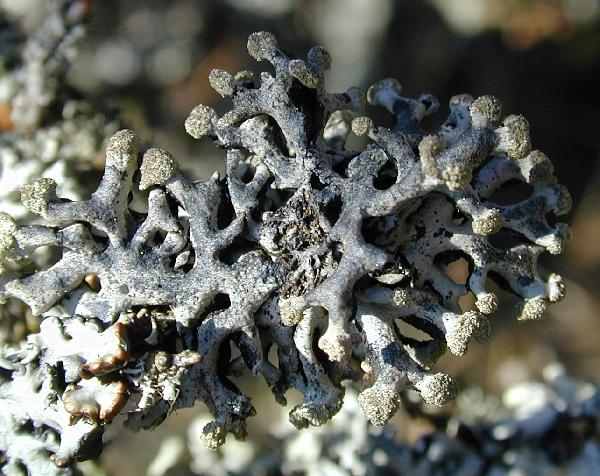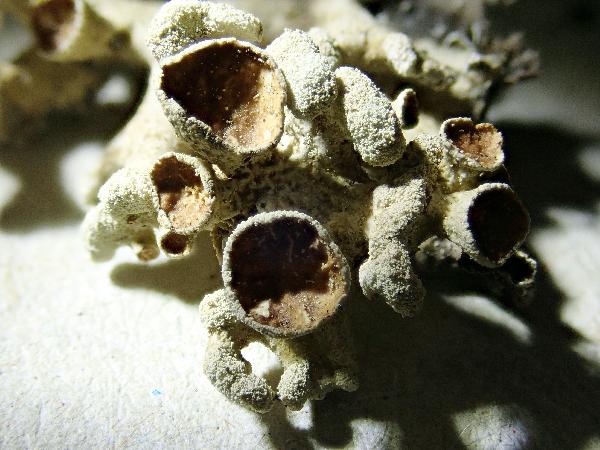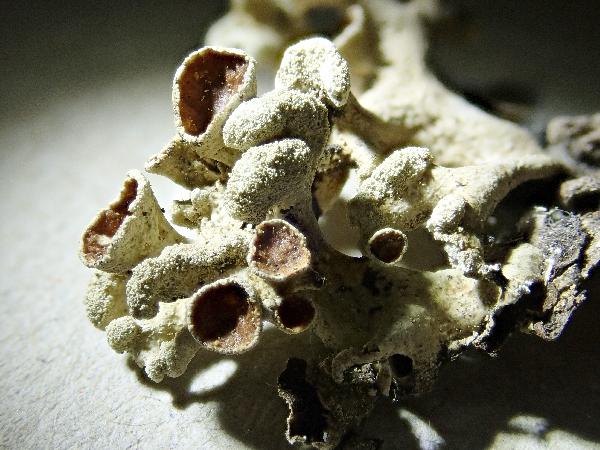Hypogymnia tubulosa (Schaer.) Hav.
Bergens Mus. Årbok, Naturv. raekke, 2: 31, 1918. Basionym: Parmelia ceratophylla var. tubulosa Schaer. - Lich. Helv. Spicil., 10: 459, 1840.
Synonyms: Parmelia tubulosa (Schaer.) Bitter
Distribution: N - VG, Frl (Badin & Nimis 1996, Tretiach & Molaro 2007), Ven (Nascimbene & Caniglia 1997, 2000b, 2002c, Caniglia & al. 1999, Nascimbene 2005c, 2008c, 2011, Nascimbene & al. 2006e, 2009c, 2010b, Nascimbene & Marini 2007, Brackel 2013), TAA (Nascimbene & Caniglia 2000b, 2002c, 2003c, Caniglia & al. 2002, Nascimbene 2003, 2005b, 2006b, 2006c, 2008b, 2013, 2014, Nascimbene & al. 2005, 2006, 2006e, 2007b, 2009, 2010, 2014, 2022, Lang 2009, Nascimbene & Marini 2015, Nimis & al. 2015, Trindade & al. 2021), Lomb (Rivellini 1994, Alessio & al. 1995, Valcuvia & Gianatti 1995, Zocchi & al. 1997, Valcuvia & al. 2003, Nascimbene & al. 2006e, Abramini & al. 2008, Furlanetto 2010, Gheza & al. 2015, 2023, Gheza 2019, 2019b), Piem (Caniglia & al. 1992, Isocrono & Falletti 1999, Isocrono & al. 2004, 2006, Morisi 2005, Isocrono & Piervittori 2008, Furlanetto 2010), VA (Borlandelli & al. 1996, Piervittori & Isocrono 1997, 1999, Piervittori & al. 2001, Matteucci & al. 2008, 2008c), Emil (Dalle Vedove & al. 2002, Benesperi 2009, Brackel 2015, Fariselli & al. 2020), Lig (Brunialti & al. 1999, Giordani & al. 2002, Giordani & Incerti 2008, Ravera & al. 2022b). C - Tosc (Loppi & al. 1994, 1998, 1999a, 2002, Tretiach & Nimis 1994, Putortì & al. 1998, Benesperi 2000a, 2011, Benesperi & al. 2007, Brackel 2015, Nascimbene & al. 2015, Frati & Brunialti 2023), Marc (Nimis & Tretiach 1999), Umb (Ravera 1998, Ravera & al. 2006, Brackel 2015), Laz (Massari & Ravera 2002, Brackel 2015), Abr (Nimis & Tretiach 1999), Mol (Caporale & al. 2008), Sar (Zedda 1995, 2002, 2002b, Nöske 2000, Loi & al. 2000, Zedda & Sipman 2001, Rizzi & al. 2011, Cossu 2013, Neuwirth 2018, Brackel & Berger 2019, Di Nuzzo & al. 2022). S - Camp (Aprile & al. 2002, 2003b, Nimis & Tretiach 2004, Garofalo & al. 2010, Catalano & al. 2016), Pugl (Nimis & Tretiach 1999, Brackel 2011), Bas (Nimis & Tretiach 1999, Potenza 2006, Potenza & al. 2010, Brackel 2011), Cal (Puntillo 1995, 1996, van den Boom & Giralt 2002, Incerti & Nimis 2006, Brackel & Puntillo 2016, 2023, Lich. Ital. Exs. 12: Puntillo & al. 2017), Si (Czeczuga & al. 1994, Grillo & Caniglia 2004, 2006, Merlo 2004b, Ottonello 2005, Iacolino & Ottonello 2006, Stofer 2006, Brackel 2008b, Ottonello & al. 2011, Campisi & al. 2020).
Description: Thallus foliose to subfruticose, heteromerous, dorsiventral, up to 7 cm wide (usually much less), the lobes subcylindrical, 1-3 mm wide, at first adpressed, then soon ascending, up to 3 mm thick, hollow, mostly convex and smooth, dichotomously branched, grey above, black beneath, the tips bearing capitate soralia with farinose soredia. Lower surface black, wrinkled, erhizinate, attached only in the central or basal parts of thallus, otherwise free. Upper cortex of tightly packed, more or less anticlinally oriented hyphae, the cell walls with Cetraria-type lichenan; medulla soon becoming hollow, lining the cavity inside the lobes, white to dark; lower cortex dark, paraplectenchymatous. Apothecia very rare, shortly stalked, lecanorine, with a red-brown disc and a peristent thalline margin. Epithecium brown; hymenium and hypothecium colourless; paraphyses coherent, simple or sparingly branched in upper part. Asci 8-spored, clavate, Lecanora-type. Ascospores 1-celled, hyaline, subglobose or broadly ellipsoid, 6-8.5 x 4.5-5.5 μm. Photobiont chlorococcoid. Spot tests: upper cortex K+ yellow, C-, KC-, P- or P+ pale yellow; medulla K-, C-, KC+ orange-red, P-, UV- or UV+ pale blue-violet. Chemistry: upper cortex with atranorin and chloroatranorin; medulla with physodic acid (major), 3-hydroxyphysodic acid (major), 2'-O-methylphysodic acid (accessory).Note: a mainly temperate, holarctic species of acid bark, often occurring on twigs; certainly rarer than H. physodes, and bound to more natural and humid situations.
Growth form: Foliose, narrow lobed
Substrata: bark
Photobiont: green algae other than Trentepohlia
Reproductive strategy: mainly asexual, by soredia, or soredia-like structures (e.g. blastidia)
Commonnes-rarity: (info)
Alpine belt: absent
Subalpine belt: very rare
Oromediterranean belt: absent
Montane belt: rather common
Submediterranean belt: very rare
Padanian area: extremely rare
Humid submediterranean belt: rather rare
Humid mediterranean belt: extremely rare
Dry mediterranean belt: absent
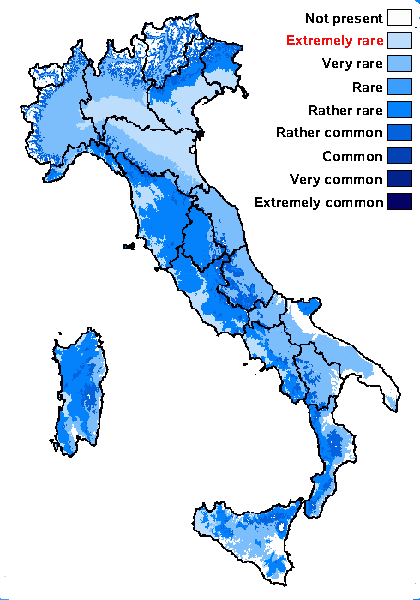
Predictive model
Herbarium samples
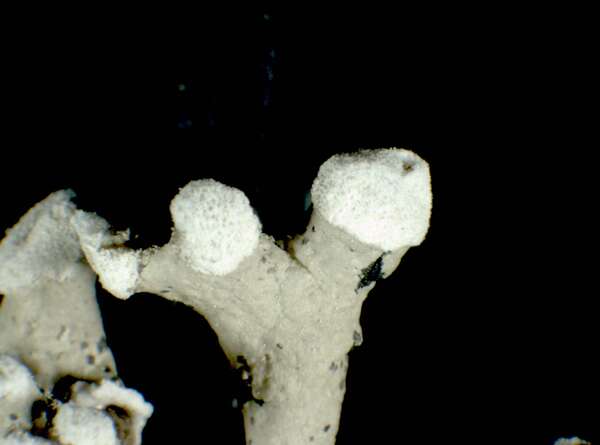

P.L. Nimis; Owner: Department of Life Sciences, University of Trieste
Herbarium: TSB (13413)
2001/11/23
detail of soralium
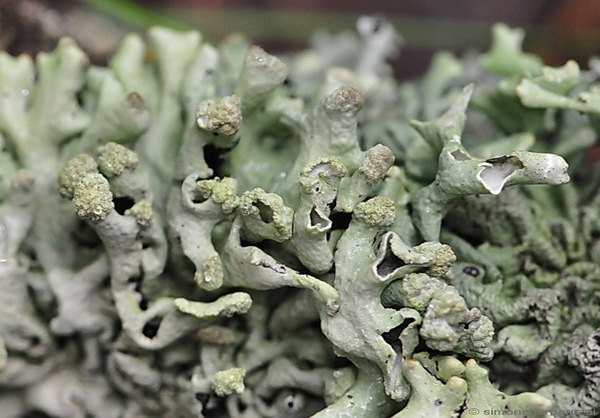
Simonetta Peruzzi; Owner: Simonetta Peruzzi
Italy, Toscana, Parco Nazionale delle Foreste Casentinesi
2010
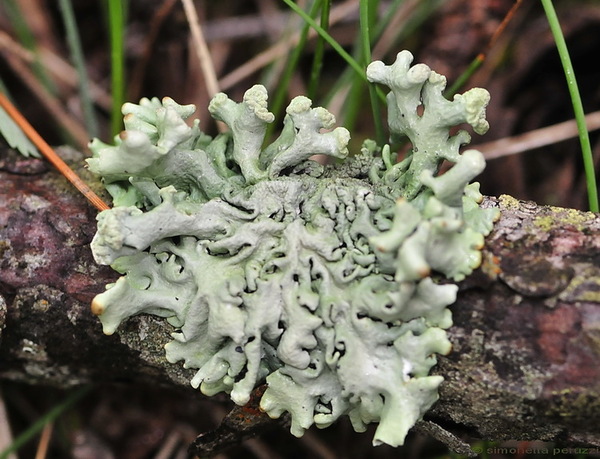
Simonetta Peruzzi; Owner: Simonetta Peruzzi
Italy, Toscana, Parco Nazionale delle Foreste Casentinesi
2010


Felix Schumm - CC BY-SA 4.0
[12647], Germany, Baden-Württemberg, Kreis Sigmaringen, 4 km nördlich von Irndorf im Irndorfer Hardt, an Birke. TK 7919. Leg. Schumm 20.09.2006, det Schumm.
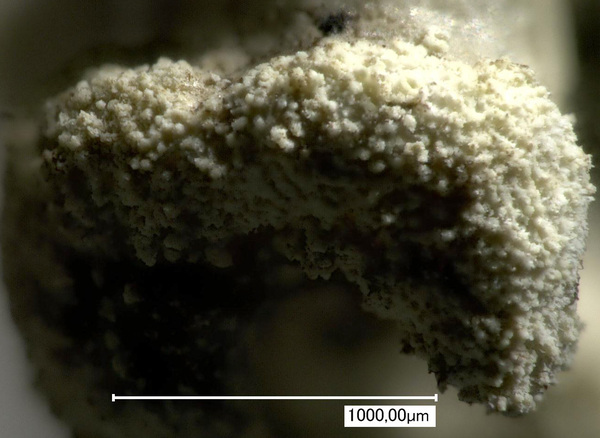

Felix Schumm - CC BY-SA 4.0
[12647], Germany, Baden-Württemberg, Kreis Sigmaringen, 4 km nördlich von Irndorf im Irndorfer Hardt, an Birke. TK 7919. Leg. Schumm 20.09.2006, det Schumm.
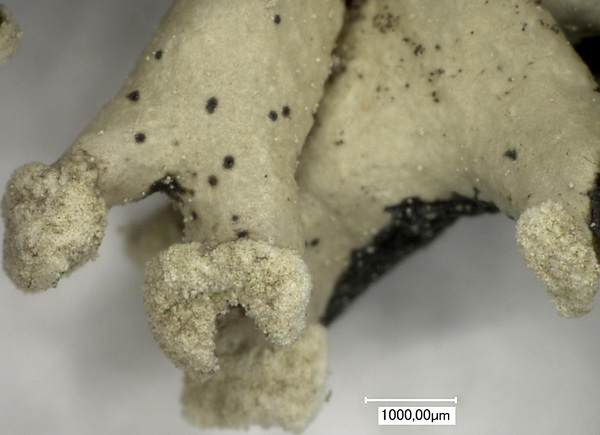

Felix Schumm - CC BY-SA 4.0
[12647], Germany, Baden-Württemberg, Kreis Sigmaringen, 4 km nördlich von Irndorf im Irndorfer Hardt, an Birke. TK 7919. Leg. Schumm 20.09.2006, det Schumm.
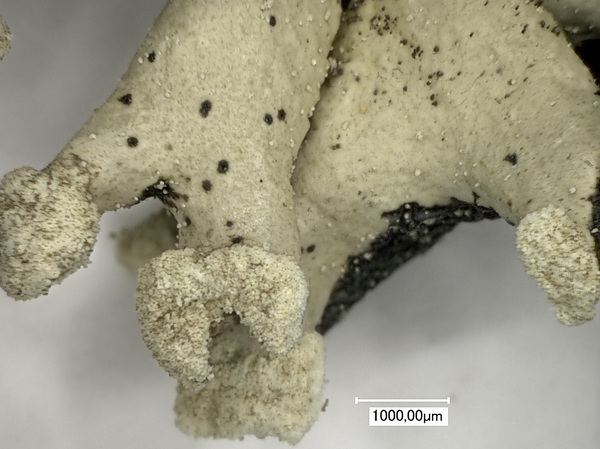

Felix Schumm - CC BY-SA 4.0
[12647], Germany, Baden-Württemberg, Kreis Sigmaringen, 4 km nördlich von Irndorf im Irndorfer Hardt, an Birke. TK 7919. Leg. Schumm 20.09.2006, det Schumm.
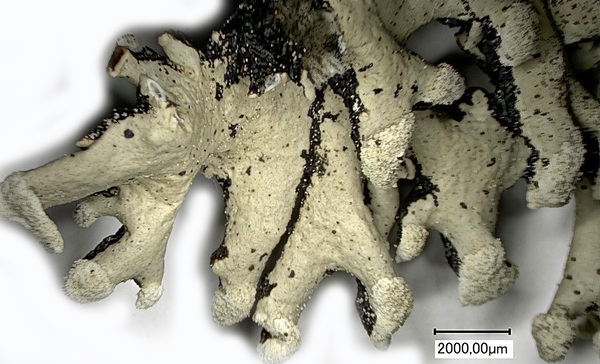

Felix Schumm - CC BY-SA 4.0
[12647], Germany, Baden-Württemberg, Kreis Sigmaringen, 4 km nördlich von Irndorf im Irndorfer Hardt, an Birke. TK 7919. Leg. Schumm 20.09.2006, det Schumm.
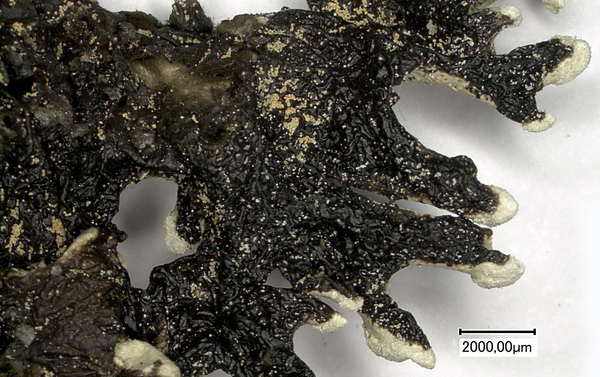

Felix Schumm - CC BY-SA 4.0
[12647], Germany, Baden-Württemberg, Kreis Sigmaringen, 4 km nördlich von Irndorf im Irndorfer Hardt, an Birke. TK 7919. Leg. Schumm 20.09.2006, det Schumm.
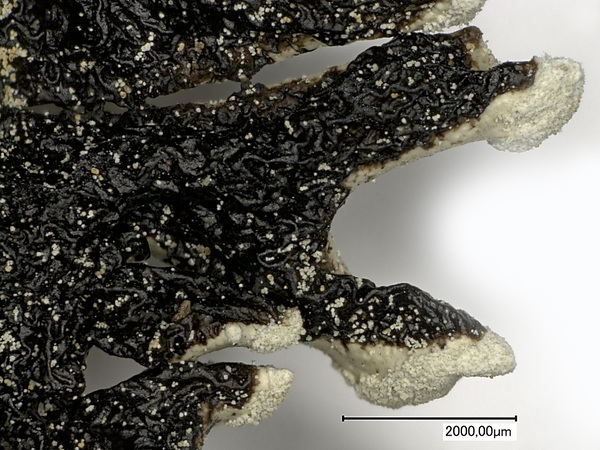

Felix Schumm - CC BY-SA 4.0
[12647], Germany, Baden-Württemberg, Kreis Sigmaringen, 4 km nördlich von Irndorf im Irndorfer Hardt, an Birke. TK 7919. Leg. Schumm 20.09.2006, det Schumm.
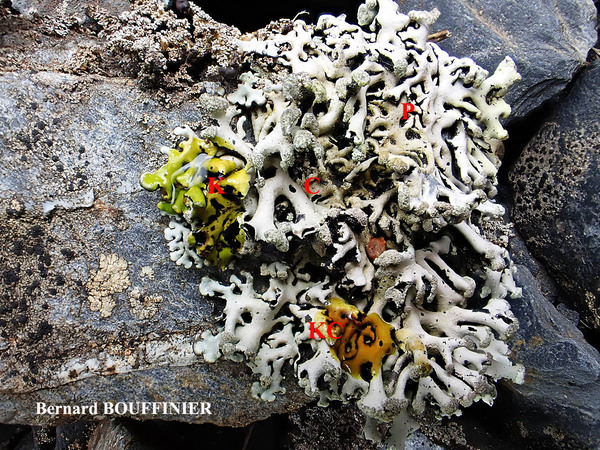
Bernard Bouffinier - Source: http://www.lichensmaritimes.org/index.php?task=fiche&lichen=752&lang=en
France, Commana

Bernard Bouffinier - Source: http://www.lichensmaritimes.org/index.php?task=fiche&lichen=752&lang=en
France, Pointe du Guern
saxicolous
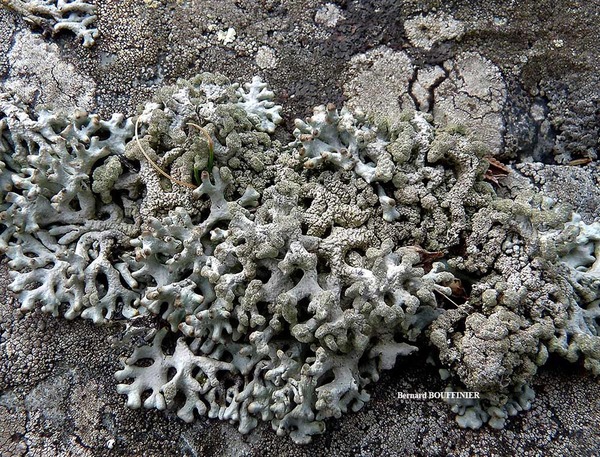
Bernard Bouffinier - Source: http://www.lichensmaritimes.org/index.php?task=fiche&lichen=752&lang=en
France, Pointe du Guern
saxicolous
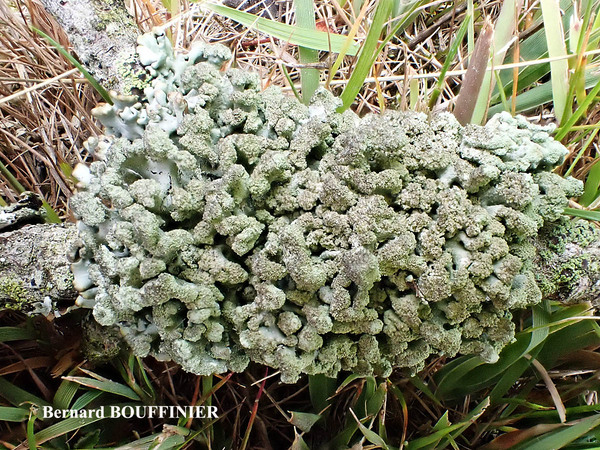
Bernard Bouffinier - Source: http://www.lichensmaritimes.org/index.php?task=fiche&lichen=1175&lang=en
France, Brennilis
on twigs
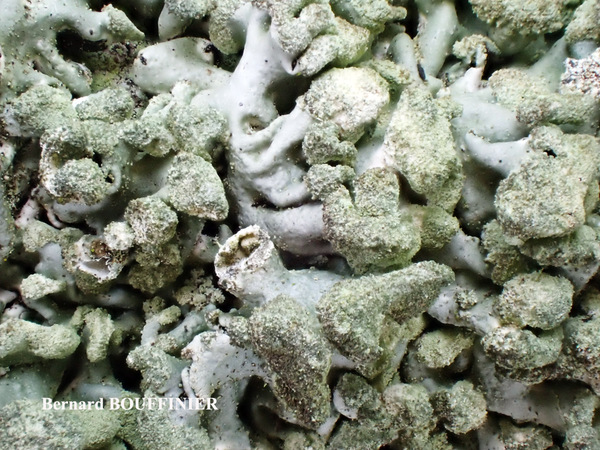
Bernard Bouffinier - Source: http://www.lichensmaritimes.org/index.php?task=fiche&lichen=1175&lang=en
France, Brennilis
on twigs
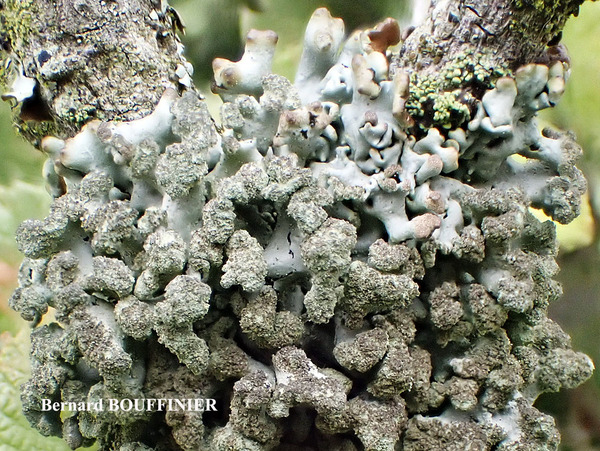
Bernard Bouffinier - Source: http://www.lichensmaritimes.org/index.php?task=fiche&lichen=1175&lang=en
France, Brennilis
on twigs
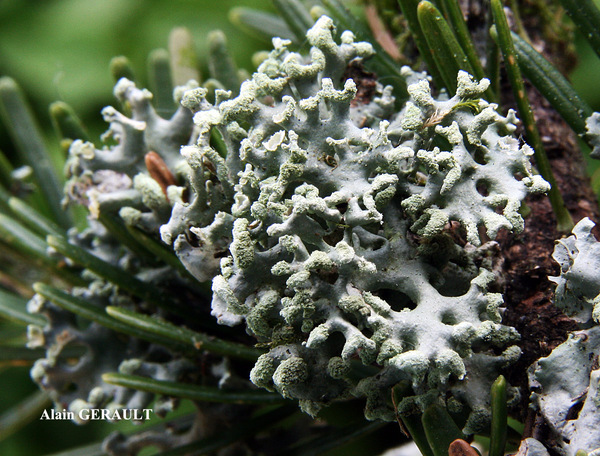
Alain Gerault - Source: http://www.lichensmaritimes.org/index.php?task=fiche&lichen=1175&lang=en
France, Cranou
on twigs
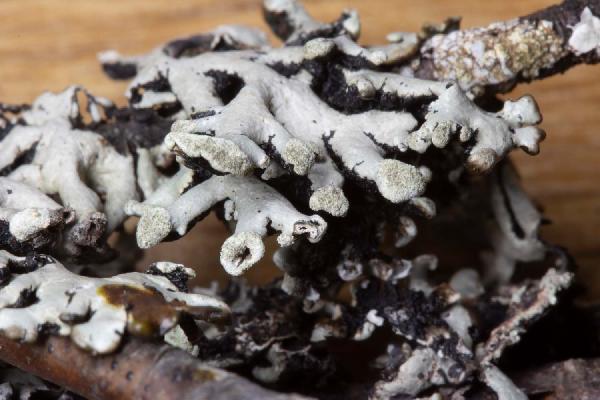
Marta González Garcia - Centro de Estudios Micologicos Asturianos
Spain, Salcedo (Quirós-Asturias), 24-IV-2023, en madera indeterminada.
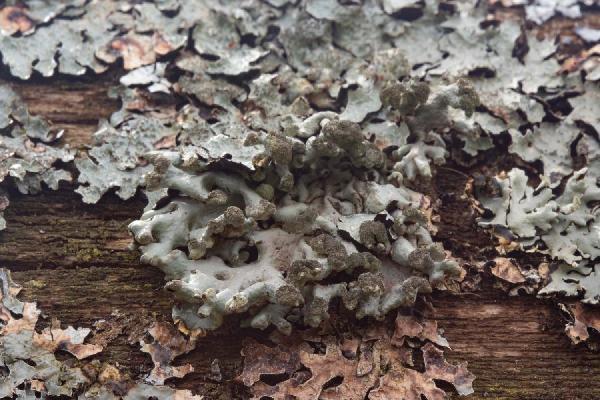
Marta González Garcia - Centro de Estudios Micologicos Asturianos
Spain, Salcedo (Quirós-Asturias), 24-IV-2023, en madera indeterminada.
Growth form: Foliose, narrow lobed
Substrata: bark
Photobiont: green algae other than Trentepohlia
Reproductive strategy: mainly asexual, by soredia, or soredia-like structures (e.g. blastidia)
Commonnes-rarity: (info)
Alpine belt: absent
Subalpine belt: very rare
Oromediterranean belt: absent
Montane belt: rather common
Submediterranean belt: very rare
Padanian area: extremely rare
Humid submediterranean belt: rather rare
Humid mediterranean belt: extremely rare
Dry mediterranean belt: absent

Predictive model
| Herbarium samples |


P.L. Nimis; Owner: Department of Life Sciences, University of Trieste
Herbarium: TSB (13413)
2001/11/23
detail of soralium

Simonetta Peruzzi; Owner: Simonetta Peruzzi
Italy, Toscana, Parco Nazionale delle Foreste Casentinesi
2010

Simonetta Peruzzi; Owner: Simonetta Peruzzi
Italy, Toscana, Parco Nazionale delle Foreste Casentinesi
2010


Felix Schumm - CC BY-SA 4.0
[12647], Germany, Baden-Württemberg, Kreis Sigmaringen, 4 km nördlich von Irndorf im Irndorfer Hardt, an Birke. TK 7919. Leg. Schumm 20.09.2006, det Schumm.


Felix Schumm - CC BY-SA 4.0
[12647], Germany, Baden-Württemberg, Kreis Sigmaringen, 4 km nördlich von Irndorf im Irndorfer Hardt, an Birke. TK 7919. Leg. Schumm 20.09.2006, det Schumm.


Felix Schumm - CC BY-SA 4.0
[12647], Germany, Baden-Württemberg, Kreis Sigmaringen, 4 km nördlich von Irndorf im Irndorfer Hardt, an Birke. TK 7919. Leg. Schumm 20.09.2006, det Schumm.


Felix Schumm - CC BY-SA 4.0
[12647], Germany, Baden-Württemberg, Kreis Sigmaringen, 4 km nördlich von Irndorf im Irndorfer Hardt, an Birke. TK 7919. Leg. Schumm 20.09.2006, det Schumm.


Felix Schumm - CC BY-SA 4.0
[12647], Germany, Baden-Württemberg, Kreis Sigmaringen, 4 km nördlich von Irndorf im Irndorfer Hardt, an Birke. TK 7919. Leg. Schumm 20.09.2006, det Schumm.


Felix Schumm - CC BY-SA 4.0
[12647], Germany, Baden-Württemberg, Kreis Sigmaringen, 4 km nördlich von Irndorf im Irndorfer Hardt, an Birke. TK 7919. Leg. Schumm 20.09.2006, det Schumm.


Felix Schumm - CC BY-SA 4.0
[12647], Germany, Baden-Württemberg, Kreis Sigmaringen, 4 km nördlich von Irndorf im Irndorfer Hardt, an Birke. TK 7919. Leg. Schumm 20.09.2006, det Schumm.

Bernard Bouffinier - Source: http://www.lichensmaritimes.org/index.php?task=fiche&lichen=752&lang=en
France, Commana

Bernard Bouffinier - Source: http://www.lichensmaritimes.org/index.php?task=fiche&lichen=752&lang=en
France, Pointe du Guern
saxicolous

Bernard Bouffinier - Source: http://www.lichensmaritimes.org/index.php?task=fiche&lichen=752&lang=en
France, Pointe du Guern
saxicolous

Bernard Bouffinier - Source: http://www.lichensmaritimes.org/index.php?task=fiche&lichen=1175&lang=en
France, Brennilis
on twigs

Bernard Bouffinier - Source: http://www.lichensmaritimes.org/index.php?task=fiche&lichen=1175&lang=en
France, Brennilis
on twigs

Bernard Bouffinier - Source: http://www.lichensmaritimes.org/index.php?task=fiche&lichen=1175&lang=en
France, Brennilis
on twigs

Alain Gerault - Source: http://www.lichensmaritimes.org/index.php?task=fiche&lichen=1175&lang=en
France, Cranou
on twigs

Marta González Garcia - Centro de Estudios Micologicos Asturianos
Spain, Salcedo (Quirós-Asturias), 24-IV-2023, en madera indeterminada.

 INDEX FUNGORUM
INDEX FUNGORUM
 GBIF
GBIF
 DOLICHENS
DOLICHENS
